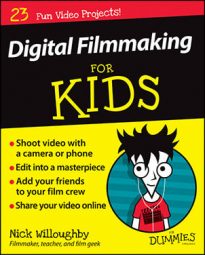If your documentary film will include interviews, you may wish to shoot them first, because your subjects’ answers may help you choose what to include in the rest of the documentary.
The subjects that you are interviewing are unlikely to be actors or people used to being on camera, so it’s very likely that they’ll be nervous, and they may make mistakes. It’s your job as a filmmaker and director to make them feel as comfortable as possible. You can do this by introducing yourself and your role within the film and by explaining to them what will happen during filming and what you would like them to do.
Many interview subjects think that they only have one chance to get their answers right, which may make them feel more nervous. Try to keep them calm. Explain that you’re there to help them, and that they can retake the interview if necessary. Allow the subjects to practice their answers in front of the camera: This may help them feel more comfortable and allow them to think about what they’re going to say.
Framing your subject
You will want to frame your subject as you might want to frame him in your film.
If you have extra lights you can use, consider using the three‐point lighting technique for the interviews. Make sure you set up the lighting and equipment before your subject arrives. You want to be sure both you and your subject are as comfortable as possible. If you’re still setting up when the subject arrives, you’ll be under pressure to get started quickly. This is how mistakes often happen.
It’s also important to think in advance about how you’ll record sound. Do you have an external microphone you can use or will you be using the onboard microphone? Remember to check for background noises and any other distractions while filming the interviews.
Mid shots and close-up shots give the most natural look to an interview. You could use both. You might start with a mid shot for the first question, change to a close‐up for the second question, and then back to a mid shot for the third. This means you can cut out the questions from the interviewer when editing, leaving just the answers. When these pieces are assembled together, this can look like one long answer from the subject and you can change the camera angle as he or she moves from one answer to the next.
Make sure the interviewer stays quiet while the subject is answering the questions because you don’t want any interruptions from off‐camera noises or laughter. Removing background noises during editing can be difficult and sometimes impossible.
Remember to use the rule of thirds.

Looking off‐camera
Many filmmakers film interviews with the subject looking away from the camera because this can be more comfortable for the audience to watch. Your subjects should look at the camera only when they’re talking directly to the audience. This technique is mainly used when filming TV presenters. To get this effect, have the person asking the questions to sit to one side of the camera, then ask your subject to look at that person when answering.
Remind subjects that they can retake the answer if they make a mistake. You can also ask your interviewer to smile, nod, and keep eye contact with the subjects while they’re answering questions. This can help them feel more comfortable.
Question in the answer
Before you start filming your interview, ask your subject or character to answer the question fully, and to include the question in the answer. For example, one crew asked their subjects what their role was in the film. If the subject just said “camera operator,” this may not make any sense to the audience when the question was cut out later.
If instead the answer was “I’m one of the camera operators in this film,” then viewers would have no trouble understanding. Your subjects may forget to do this for every question, however, so you may have to remind them from time to time.

